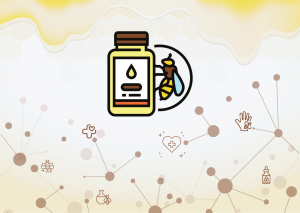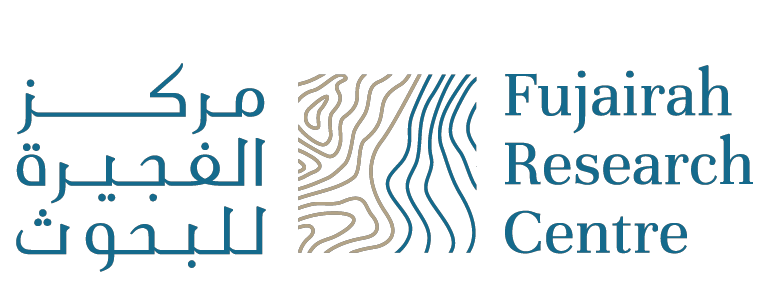
Unveiling the Healing Potential: The Wonders of Apitherapy with Bee Venom
Beyond the familiar sting we associate with bee encounters lies a hidden gem—bee venom. Bee venom, a complex substance produced by our tiny pollinator friends, has recently been gaining attention for its potential health benefits. The Fujairah Research Centre (FRC) aims to explore the therapeutic potential of bee venom through the lens of apitherapy. We will delve into the research conducted by the FRC, shedding light on the fascinating world of apitherapy and the promising benefits of bee venom in cancer treatment.
Apitherapy, the therapeutic use of bee products, has been practiced for centuries and continues to gain recognition for its potential health benefits. Among the various bee products employed in apitherapy, honey, propolis, royal jelly, and bee venom stand out. Honey, with its natural antibacterial properties, is commonly used to treat wounds, soothe sore throats, and alleviate coughs. Propolis, a resinous substance collected by bees from plants, is rich in antioxidants and known for its antimicrobial properties, making it a valuable addition to natural remedies. Royal jelly, a secretion produced by worker bees, is highly nutritious and often incorporated into supplements for its potential anti-aging and immune-boosting effects. Bee venom, obtained through controlled extraction, is explored for its potential in treating conditions such as arthritis and certain skin disorders. Apitherapy harnesses the diverse healing properties of these bee products, offering a holistic approach to health and wellness.
Embarking on a journey through time, bee venom, or apitoxin, reveals a rich history deeply intertwined with human healing practices. From the ancient civilizations of Egypt and Greece, where bee stings were revered as remedies, to Traditional Chinese Medicine utilizing bee venom for its anti-inflammatory properties, this natural substance has traversed centuries as a therapeutic agent. In medieval and Renaissance Europe, folk medicine incorporated bee venom to alleviate joint pain, while historical figures like Cleopatra embraced its cosmetic potential. The 20th century marked a shift towards scientific exploration, unveiling key components like melittin with anti-inflammatory and antimicrobial properties. The term "apitherapy" gained prominence, encapsulating the therapeutic use of bee products, including venom, for various health applications. Contemporary Bee Venom Therapy (BVT) research explores its potential in treating conditions such as rheumatoid arthritis, multiple sclerosis, and certain cancers. Additionally, the cosmetic industry has embraced bee venom for its purported anti-aging effects. Bee venom extraction methods have evolved over time, considering both the well-being of the bees and the efficiency of venom collection. Traditionally, beekeepers relied on glass or plastic sheets with a grid of wires to gently stimulate bees, encouraging them to sting through the material. This manual approach, while effective, required careful handling to prevent harm to the bees. In recent years, technological advancements have introduced electric venom collectors that utilize a mild electrical current to stimulate bees, triggering them to release venom without stinging. These devices provide a more controlled and automated process, minimizing stress on the bees and enhancing the efficiency of venom extraction. These methods are pivotal in obtaining bee venom for various applications, including apitherapy and scientific research exploring its potential health benefits. As we stand at the crossroads of ancient wisdom and modern science, bee venom's journey unfolds, promising novel applications and breakthroughs in the realms of health and well-being.
At FRC, research is going to actively investigate the biodynamic activities of bee venom, utilizing the principles of apitherapy. This holistic approach not only aims to understand the biochemical properties of bee venom but also explores its potential efficacy against cancerous cells. Through a comprehensive analysis. Clinical Relevance and Translational Potential studies aim to focus on the clinical relevance and translational potential of apitherapy using bee venom. Bridging the gap between scientific discoveries and real-world applications, the research assesses the viability of apitherapy as a potent tool in the fight against cancer. Benefits of Apitherapy with Bee Venom include Anti-Cancer Properties: Early indications suggest that Apitherapy, specifically using bee venom, may possess anti-cancer properties, positioning it as a promising candidate for future cancer treatments. FRC's research aims to substantiate these claims through rigorous scientific analysis within the context of apitherapy. In addition, Biodynamic Assessment: Apitherapy, guided by the principles of FRC's Biodynamic Assessment, provides an in-depth understanding of how bee venom interacts with cancer cells on a biochemical level. This approach is crucial for unlocking the full potential of apitherapy in cancer therapy. Moreover, Translational Potential: The FRC's emphasis on translational research highlights its commitment to moving beyond theoretical discoveries within the realm of apitherapy. Assessing the practical applications of apitherapy with bee venom opens new doors for innovative and effective cancer treatments.
As the FRC continues its groundbreaking research into the biodynamic activities of Honey and bee products, the potential for transformative advancements in cancer treatment becomes increasingly evident. The holistic approach of apitherapy, coupled with the healing potential of bee venom, holds promise for a brighter, healthier future. Join us as we navigate the world of apitherapy and uncover the remarkable benefits of bee venom in the realm of cancer therapy.
